Early in the morning, we head to Isla Lobos to take a dinghy ride and watch the two species of sea lions that are found here. You can also snorkel at this spot. After, you will be transfered to the airport.
Baltra: Departure from Quito or Guayaquil to Baltra Island (2 ½ hour flight). Arriving in the Galapagos, passengers are picked up at the airport by our naturalist guides to take advantage of the time in the archipelago.
North Seymour: Dry landing. Off of Baltra Island and not far from Santa Cruz, North Seymour is located. This landmass was formed by a series of underwater volcanic eruptions, which deposited layers of lava on the ocean floor. An approximately two-hour walk amidst large nesting colonies of blue-footed boobies, magnificent and great frigate birds, and swallow-tailed gulls for an in depth encounter with sea bird breeding cycles and sea lions. You will also encounter land iguanas, and on a lucky day, you might even come across the endemic Galapagos Snake.
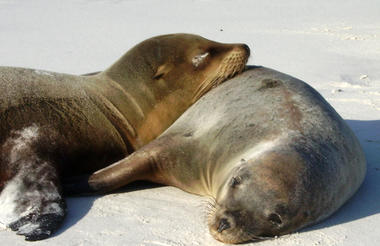


Charles Darwin Research Station: Once home to the famous Lonesome George, the last tortoise of the Pinta race, the breeding and relocation center is named in honour of his long-time guardian. The center is set in the Galapagos National Park Service where various interpretative buildings are available to visit. The grounds, with large stands of native vegetation are one of the better places to spot some of the seldom seen Darwinís finches such as the woodpecker, cactus and vegetarian finches.
Mosquera Islet: Wet Landing, Mosquera Islet is located between North Seymour and Baltra Island. This flat, sandy island has a large colony of sea lions. It is also an excellent site to observe shorebirds such as herons and lava gulls. There is no trail on the islet, the visitor can enjoy the open area. Most of the islet is covered with sand and barren lava rock. Very little sesuvium portulacastrum plants grow on the sand.

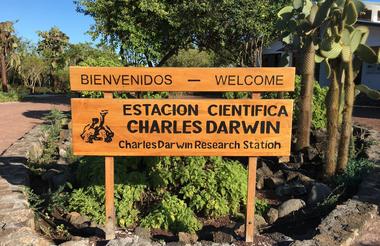

South Plaza Island: Dry landing. There are two Plaza Islets (north and south) located east of Santa Cruz Island. On the northern part of the Islet, visitors begin the journey along an impressive cactus forest were colorful yellow and red land iguanas live, the population number is around 300 animals; during the dry season they survive on fruits and flowers of the opuntia cacti. A peculiar thing to see in South Plaza is the hybrid iguana (sea and land). When reaching the highest point, tropicbirds can be seen. During the dry season (June – January) the usually greenish and yellowish vegetation change of color creating a bright red landscape (sesuviumedmonstonei plant).
Santa Fe Island: Wet landing. Santa Fe shows white sand beaches surrounded by sea lion colonies; through the island path, an endemic cactus forest is passed, home the Santa Fe land iguanas (the largest in the islands). This island is the habitat for a number of species, including the Galapagos hawk, Galapagos snakes, rice rats (one of the few endemic Galapagos rodents)
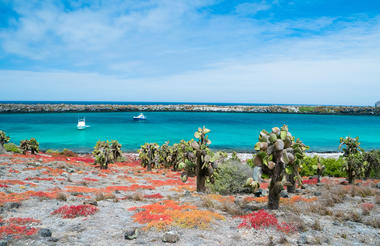
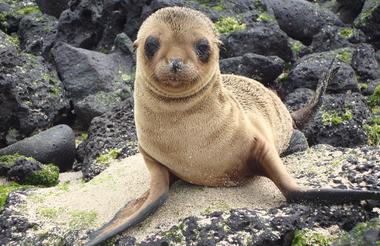
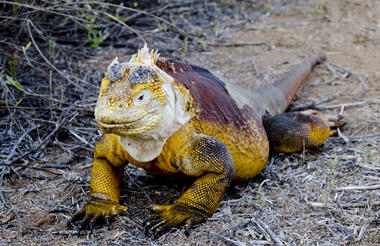
Breakfast
Lunch
Dinner
Lobos Island: Dry landing: Isla Lobos is aproximately 20 minutes by boat from Puerto Baquerizo Moreno. Once on the island, the trail is about 850 meters and there will be rocky trail and a nice & easy sand trail too. There is a small population of blue-footed boobies and great frigatebirds nests at this site. You Can also find a colony of sea lions. During the boat ride, you can see brown pelicans and several species of shorebirds.
After the visit you will go to San Cristobal Airport for their return flight to Guayaquil or Quito.



Breakfast








